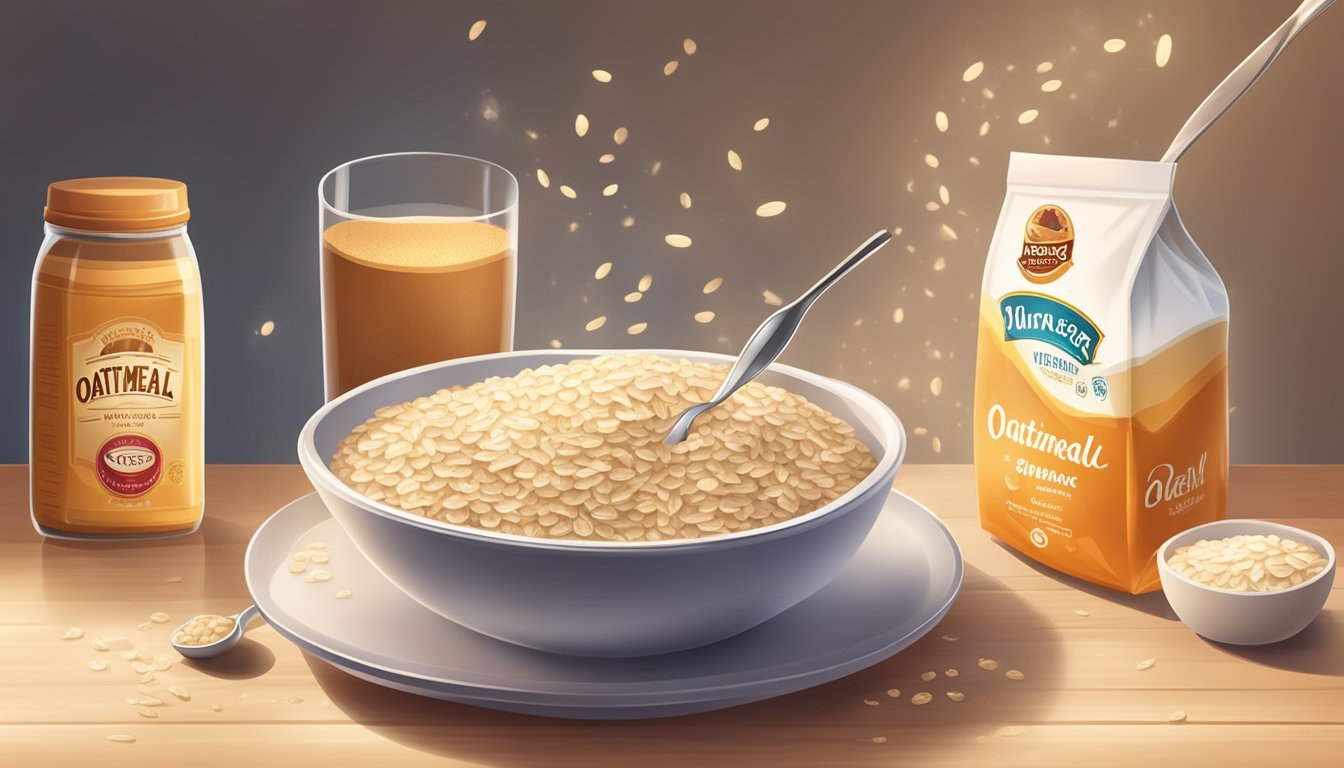Understanding High Glycemic Index Foods
What You Need to Know
The glycemic index (GI) measures how quickly carbohydrates in foods raise blood sugar levels. High glycemic index foods cause a rapid spike in blood glucose, which can affect energy levels and overall health. Examples include processed snacks, sugary beverages, and certain types of bread and cereals.
Understanding which foods have a high GI is essential for those looking to manage weight, diabetes, or overall health. Knowing the impact of high glycemic foods can guide better dietary choices and promote more stable blood sugar levels. This article explores the importance and implications of high glycemic index foods in daily diets.
1) White Bread
White bread is among the foods with a high glycemic index (GI). It typically has a GI score above 70. This means that consuming white bread can cause a rapid spike in blood sugar levels.
White bread is made from refined white flour, which lacks the fiber found in whole grains. The removal of the bran and germ during processing contributes to its high GI.
Due to its high GI, white bread is digested quickly. This rapid digestion can lead to short-term energy spikes. For individuals managing blood sugar levels, especially those with diabetes, white bread can be a less desirable option.
Many processed foods contain starches similar to those in white bread. These starches are rapidly broken down by the body, contributing to elevated blood glucose levels.
Choosing whole grain or whole wheat bread can be a better alternative. These options often have a lower GI and retain more nutritional benefits.
2) Rice Cakes
Rice cakes are a popular snack often favored for their low calorie content and simplicity. Made from puffed rice, they come in various flavors and can be paired with other foods like spreads or vegetables.
One notable characteristic of rice cakes is their high glycemic index (GI). The GI rating for rice cakes ranges from 70 to 90, depending on the brand. This means they can cause a rapid increase in blood glucose levels.
The glycemic load (GL) of rice cakes is also worth mentioning. A typical serving of rice cakes has a high GL, indicating a significant effect on blood sugar levels. This is important to consider for individuals managing conditions like diabetes.
Nutritionally, rice cakes provide minimal protein and fiber, which are essential for a balanced diet. They contain about 35 calories per plain, unsalted brown rice cake. They also offer carbohydrates and some micronutrients but lack substantial fiber and protein content.
For diabetics or those concerned about blood sugar levels, consuming rice cakes in moderation and pairing them with protein or fiber-rich foods might help mitigate rapid blood sugar spikes.
3) Cornflakes
Cornflakes are a popular breakfast cereal made from milled corn. They are often consumed with milk or yogurt.
Cornflakes exhibit a high glycemic index (GI) and glycemic load (GL). The glycemic load of cornflakes is approximately 55.3. This high GL indicates that consuming cornflakes can cause significant spikes in blood sugar levels.
A 100-gram serving of cornflakes contains about 320 calories, 5.5 grams of protein, 65 grams of carbohydrates, and 1 gram of fat. The high carbohydrate content, largely from refined sources, contributes to their high GI.
For those managing blood sugar levels, cornflakes may not be the best option. They can be quickly digested, leading to rapid increases in blood glucose. It is advisable to consume them in moderation or seek alternatives with lower GI values.
4) Instant Oatmeal
Instant oatmeal is a highly processed form of oats. Unlike steel-cut or rolled oats, instant oatmeal is partially cooked and then dried, making it quicker to prepare. This processing increases its glycemic index (GI), which can lead to faster spikes in blood sugar levels.
According to the international GI database maintained by the University of Sydney, a 250-gram serving of instant oatmeal has a GI of 83. This high GI rating is a significant contrast to less processed oats such as steel-cut oats, which typically have a much lower GI.
For individuals managing their blood sugar levels, this high GI content can be problematic. Instant oatmeal can cause rapid increases in blood glucose, making it less suitable for people with diabetes compared to other forms of oatmeal.
To mitigate the impact on blood sugar, pairing instant oatmeal with protein or healthy fats can help slow the release of glucose into the bloodstream. Additionally, watching portion sizes and avoiding high-sugar toppings can minimize potential spikes.
5) Potatoes
Potatoes are a staple food known for their high glycemic index (GI). The way a potato is prepared significantly affects its GI. Boiled and roasted potatoes generally have a lower GI, rated at 59.
Baked potatoes have a higher GI, around 69. Mashed and instant potatoes are even higher, with GIs of 78 and 82, respectively. This indicates that these preparations cause quicker spikes in blood sugar levels.
The type of potato also matters. Boiled waxy potatoes have a GI of 89, while baked starchy potatoes can reach a GI of 111. Sweet potatoes show more variation, with a GI ranging from 44 to 94 based on their type and cooking method.
Potatoes are high in starches that are rapidly broken down by the body, contributing to their high glycemic index. Foods like white bread and white rice share this characteristic, being high GI foods as well.
Considering what accompanies potatoes in a meal is essential. Other foods consumed alongside potatoes can influence how quickly blood sugar levels rise. For those managing blood sugar, selecting the type and preparation method of potatoes can make a notable difference.
6) Pumpkin
Pumpkin ranks moderately high on the glycemic index (GI) with a score of 75. This means it can cause a fairly rapid increase in blood sugar levels when consumed, making it similar in GI to foods like white bread.
Despite this, pumpkin has several nutrients that benefit health. It contains antioxidants like vitamins A and E, which provide various health benefits. Vitamin A, for example, supports vision and immune function.
Additionally, pumpkin is a good source of potassium. This electrolyte can help lower blood pressure, especially in individuals with hypertension. A single cup of canned pumpkin offers about 11% of the recommended daily intake for potassium.
Various studies indicate pumpkin might have unique effects on blood sugar regulation. For instance, one study showed a reduction in HbA1c levels in diabetic patients after including pumpkin in their diet.
This suggests that while pumpkin has a high glycemic index, it could still offer benefits for blood sugar management if consumed in moderation.
7) Watermelon
Watermelon is a fruit with a high glycemic index (GI). The glycemic index of watermelon is about 75, which classifies it as a high GI food. This measurement indicates that watermelon can cause a quick spike in blood sugar levels after consumption.
Despite its high GI, the glycemic load (GL) of watermelon is relatively low. The GL of a typical portion size of 120 grams is around 5. This lower glycemic load suggests that while watermelon raises blood sugar quickly, the overall carbohydrate content per serving is not excessively high.
Watermelon's high water content plays a role in its glycemic properties. It contains roughly 92% water, which can help moderate the impact on blood sugar levels when consumed in reasonable quantities.
Nutritionally, watermelon offers several benefits. It is low in calories and provides essential nutrients like vitamins A and C. Additionally, it contains antioxidants, including lycopene, which is beneficial for overall health.
For those monitoring their blood sugar levels, moderation is key. Including watermelon in a balanced diet can be manageable, provided it is consumed in controlled portions and as part of a meal that includes other low-GI foods.
8) Pretzels
Pretzels are a popular snack, but they have a high glycemic index (GI). A high GI means the food is digested and absorbed quickly, leading to a rapid spike in blood sugar levels. Specifically, pretzels have a GI of around 83, making them a challenging choice for those managing diabetes or insulin resistance.
Most pretzels are low in fiber, contributing less than 5% of the Daily Value per serving. Fiber is crucial for digestive health, cholesterol management, and stabilizing blood sugar levels. The low fiber content in pretzels may not offer these benefits, leading to quicker digestion and absorption into the bloodstream.
In addition to their high glycemic index, pretzels are often high in sodium. High sodium intake can be detrimental to individuals with hypertension. The combination of high GI and sodium makes pretzels less ideal for those seeking to maintain balanced blood sugar and blood pressure levels.
For individuals with diabetes, the high glycemic index and high-calorie content of pretzels can make blood sugar management difficult. They contain wheat and yeast, which also have high glycemic indexes, adding to the rapid impact on blood glucose levels. This can result in fluctuations that may be hard to control.
9) Rice Pasta
Rice pasta is commonly consumed as a gluten-free alternative to traditional wheat pasta. It is made from rice flour, which gives it a high glycemic index (GI). This means that rice pasta can cause a rapid increase in blood sugar levels after consumption.
White rice pasta, in particular, has a GI that typically falls around 70 or higher. This positions it in the category of high GI foods. High GI foods can be concerning for individuals managing diabetes or trying to maintain stable blood sugar levels.
Some variations, like brown rice pasta, may have a slightly lower GI due to the presence of more fiber. Still, they generally remain higher on the glycemic scale compared to whole-wheat pasta.
People choosing rice pasta for dietary reasons should be aware of these factors. Portion control and pairing with low-GI foods, such as vegetables and lean proteins, can help manage the impact on blood sugar levels.
Incorporating rice pasta into a balanced meal can be beneficial, but it requires careful consideration for those needing to manage their glycemic intake.
10) Melba Toast
Melba toast is a type of dry, crisp bread that has been baked twice. It is often used as a base for toppings or as a snack on its own.
This food is known for its high glycemic index (GI). Foods with a high GI, such as Melba toast, can cause a rapid increase in blood sugar levels.
Melba toast's carbohydrate content is quite high. Specifically, a 100-gram serving contains around 70.3 grams of net carbs. These carbohydrates are quickly digested and absorbed, contributing to its high GI.
Despite being low in fat, Melba toast is not the best option for those looking to manage their blood sugar levels effectively.
The nutritional composition of Melba toast includes about 5.26% water, 12.47% protein, and 3.3% fat. The significant carbohydrate percentage highlights its impact on glycemic response.
Due to its high glycemic load and index, Melba toast is better consumed in moderation, especially by individuals monitoring their blood sugar levels.
Understanding Glycemic Index
The glycemic index (GI) is a valuable tool to predict how different foods impact blood sugar levels. It ranks carbohydrates based on their immediate effect on blood glucose, which is particularly important for managing diabetes and weight.
What Is Glycemic Index?
Glycemic index is a numerical scale (0-100) that ranks foods based on how quickly their carbohydrates convert to glucose in the body.
Foods with a high GI (70+) cause rapid spikes in blood sugar, while low GI foods (0-55) result in a slower, more gradual rise.
This categorization helps individuals select foods that support stable blood sugar levels, reducing the risk of insulin resistance and type 2 diabetes.
How Glycemic Index Is Measured
The glycemic index is determined by feeding a group of people a specific food and measuring their blood glucose levels over a two-hour period.
The blood glucose response to the test food is then compared to the response from consuming pure glucose, which has a GI value of 100.
The result is an average value representing how quickly the carbohydrate in the food is converted to glucose.
Foods with fiber, protein, or fat tend to have lower GI values because these components slow digestion and glucose absorption.
Conversely, highly processed foods with refined sugars usually have high GI values.
Understanding these nuances helps in making informed dietary choices that promote overall health and well-being.
Health Implications of High Glycemic Index Foods
Consuming foods high in glycemic index (GI) has significant effects on health, particularly in the areas of blood sugar levels, diabetes risk, and weight management.
Impact on Blood Sugar Levels
High GI foods cause rapid spikes in blood sugar levels. These quick rises happen because these foods are easily digested and absorbed.
The glycemic index measures how much specific foods raise blood sugar within two hours of consumption. For example, foods with a GI over 70 can cause a sharp rise.
As a consequence, these fluctuations can lead to fatigue and hunger shortly after eating. Consistent consumption of high GI foods may stress the body's insulin response.
Connection to Diabetes
There is a strong link between high GI diets and Type 2 diabetes. When blood sugar spikes frequently, the body may develop insulin resistance.
Insulin resistance forces the pancreas to produce more insulin, leading to strain and eventually potential failure in insulin production. Studies show that individuals consuming high GI diets are at a higher risk of developing diabetes.
Making dietary adjustments to include more low and medium GI foods can be beneficial. These foods help manage blood glucose levels more effectively.
Effects on Weight Management
High GI foods are often linked to weight gain. Rapid digestion and absorption can lead to a cycle of quick hunger and overeating.
These foods may have lower satiety levels, leading people to consume more calories throughout the day. Weight management issues also arise because constant high blood sugar levels can promote fat storage.
A balanced diet with low GI foods can provide more stable energy. This helps in feeling fuller for longer and reducing overall calorie intake. Parents may find that such dietary choices benefit children in maintaining a healthy weight.
Managing Glycemic Intake
Controlling glycemic intake involves understanding how to balance foods high and low in glycemic index (GI) and incorporating dietary habits that support stable blood sugar levels. This can be beneficial for overall health and particularly important for people with conditions like diabetes.
Balancing High and Low Glycemic Foods
Combining high and low glycemic foods can help mitigate rapid blood sugar spikes. For example, pairing white bread (high GI) with protein-rich foods like chicken or beans (low GI) slows down the absorption of glucose.
Low GI Foods (0-55):
Fruits and vegetables
Beans and legumes
Whole grains
Nuts
High GI Foods (70+):
White bread
Corn chips
Pretzels
Sweetened beverages
Maintaining a balance keeps blood sugar levels more stable.
Dietary Tips for Glycemic Control
Small but effective dietary changes can significantly impact glycemic control.
Portion Control: Consume high GI foods in smaller quantities.
Fiber Intake: Increase fiber, as it slows down carbohydrate digestion.
Healthy Snacking: Opt for snacks like nuts or yogurt instead of sugary treats.
Frequent Meals: Eating smaller, more frequent meals helps maintain balanced blood sugar.
Including a mix of proteins and fats with carbohydrates also stabilizes glucose levels. Regular monitoring is crucial, especially for individuals managing diabetes.






